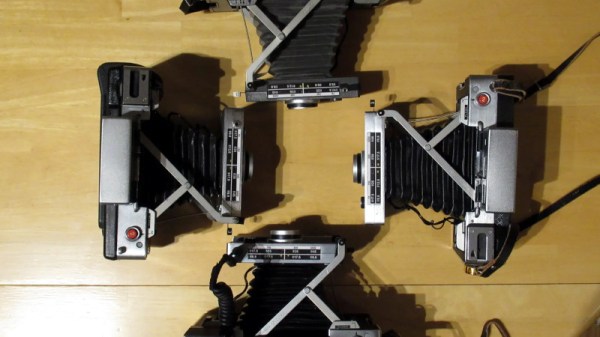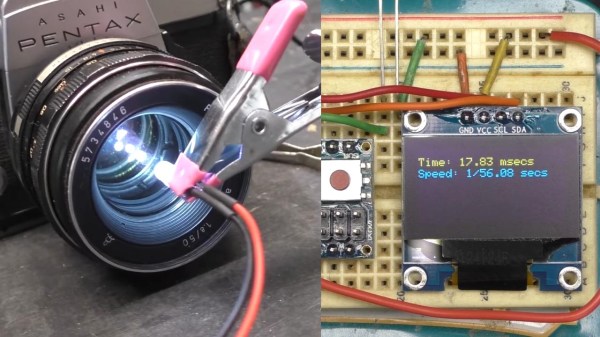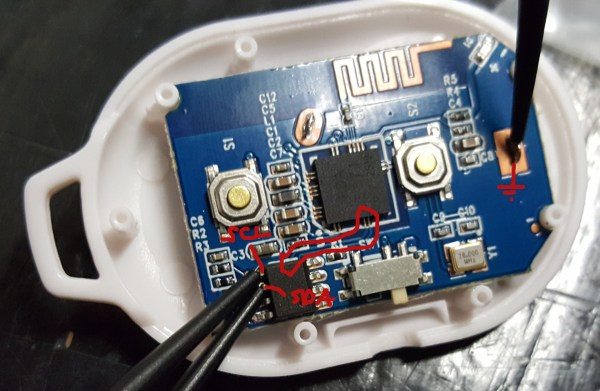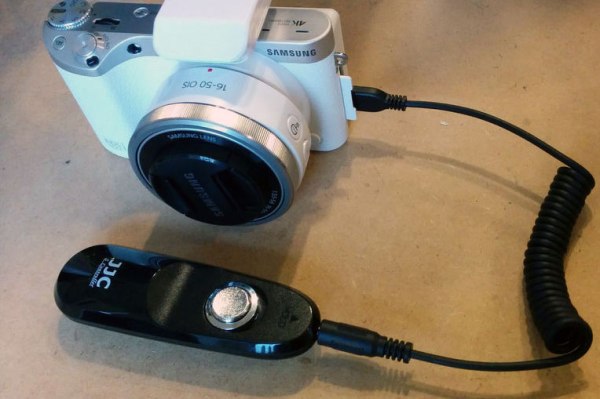There once was a time when all but the most basic of fixed focus and aperture cameras gave the photographer full control over both shutter speed and f-stop. This allowed plenty of opportunity to tinker but was confusing and fiddly for non-experts, so by the 1960s and ’70s many cameras gained automatic control of those functions using the then quite newly-developed solid state electronics. Here in 2023 though, the experts are back and want control. [Jim Skelton] has a vintage Polaroid pack film camera he’s using with photographic paper as the film, and wanted a manual exposure control.
Where a modern camera would have a sensor in the main lens light path and a microcontroller to optimize the shot, back then they had to make do with a CdS cell sensing ambient light, and a simple analog circuit. He considered adding a microcontroller to do the job, but realized that it would be much simpler to replace the CdS cell with a potentiometer or a resistor array. A 12-position switch with some carefully chosen resistor values was added, and placed in the camera’s original battery compartment. The final mod brought out the resistors and switch to a plug-in dongle allowing easy switching between auto and switched modes. Result – a variable shutter speed Polaroid pack camera!
Sadly the film for the older Polaroid cameras remains out of production, though the Impossible Project in the Netherlands — now the heirs to the Polaroid name — brought back some later versions and have been manufacturing them since 2010. Hackers haven’t been deterred though and have produced conversions using Fuji Instax film and camera components, as with this Polaroid portrait camera, and [Jim]’s own two-camera-hybrid conversion.














